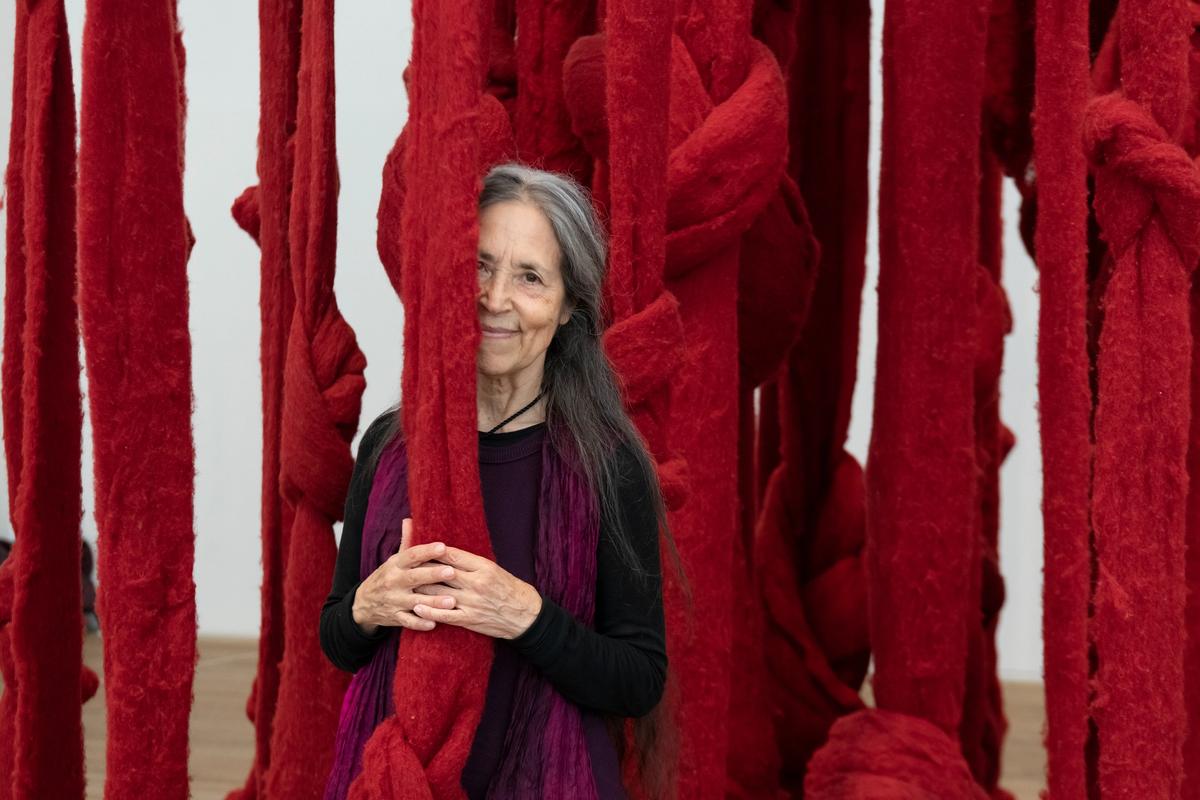The Chilean artist and activist Cecilia Vicuña—who has tackled issues such as environmentalism and feminism over her 50-year career—will take over Tate Modern’s Turbine Hall this autumn (13 October 2022-16 April 2023). Vicuña will create the next Hyundai Commission in the vast cathedral-like space that has previously hosted works by artists such as Kara Walker and Olafur Eliasson.
Born in Santiago in 1948, Vicuña was studying at the Slade School of Fine Art in London in 1973 when a coup d’état broke out in Chile, and she remained in exile in the UK for two years before moving to Colombia and then New York. Vicuña has subsequently referenced ancient practices, addressing political, environmental and gender disparities. “Vicuña’s ephemeral and environmentally conscious work combines the tactile ritual of weaving with assemblage, poetry, performance, and painting,” a Tate statement says.
Tate has acquired Vicuña’s 2017 piece entitled Quipu Womb (The Story of the Red Thread, Athens), comprising 50 strands of unspun wool hanging from a metal ring. “The work references menstrual blood as well as the energies, flows and cycles of nature. Vicuña draws from Indigenous weaving practices, ritual and environmental activism. Many of these works include explorations of the quipu. This is an ancient system of knotting rope used by Inca and Andean cultures,” says a gallery label.
Frances Morris, the director of Tate Modern, says in a statement: “As a tireless champion of ecological awareness and social justice, as well as the creator of stunning and powerful works of art, I am delighted that Tate Modern will be working with Cecilia Vicuña on our next annual Hyundai Commission.” The previous artist selected for the commission was Anicka Yi who filled the cavernous Turbine Hall with giant floating robots.
Earlier this month, Vicuña received a Golden Lion for Lifetime Achievement from the Venice Biennale along with the German artist Katharina Fritsch. Both artists were chosen by Cecilia Alemani, the curator of the 59th International Art Exhibition of La Biennale di Venezia. “Vicuña is an activist who has long fought for the rights of Indigenous peoples in Chile and the rest of Latin America. In the visual arts, her work has ranged from painting, to performance, all the way to complex assemblages. Her artistic language is built around a deep fascination with Indigenous traditions and non-Western epistemologies,” Alemani said.
Vicuña has also published 27 volumes of poetry; in a 2019 interview with The Art Newspaper, she described the links between her art and her poetry, saying: “From the start, my work has been an interaction between [both].” She also describes the development of the Precario series, which are sculptures combining materials such as feathers, stone, plastic and wood. “I started creating Precario works in January 1966 and, from that moment, I began a practice that is still ongoing. I continue to create the sculptures in the same manner as in that moment—not as if that moment were happening in 1966 but as if it’s still happening now,” she said.



